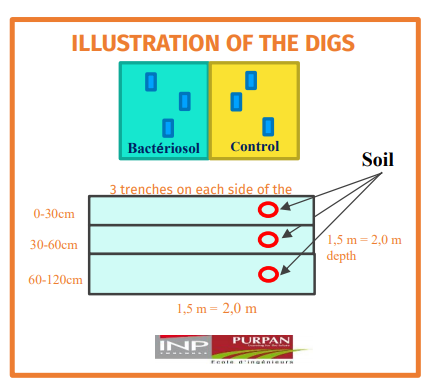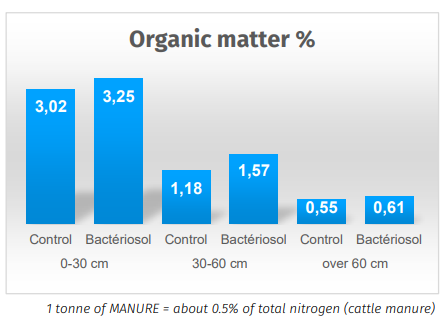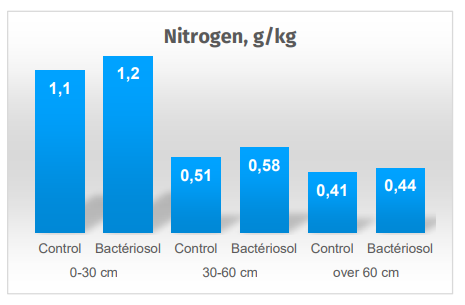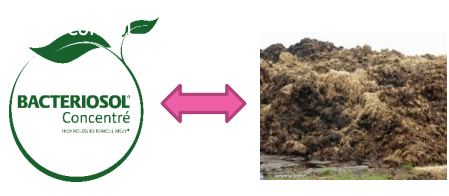Improving carbon and nitrogen storage in soils thanks to marcel mézy technologies
Marcel Mézy, a pionner in many fields, identified the action of his complex of microorganisms on carbon storage in the soil. The first results were observed in a laboratory in closed conditions where wheat was grown in washed river sand. The conclusions show a 6-fold increase in organic matter content in 2 months due to the use of BACTÉRIOSOL. Subsequently, a lot of ad-hoc evidence and testimonies from the field have made it possible to validate and consolidate these results.
In 2016, Purpan's school of agronomy was asked by Sobac to measure in a completely independent manner the action of Marcel Mézy Technologies on the storage of carbon and nitrogen in soils. A set of 10 plots using BACTÉRIOSOL for at least 3 years without adding organic matter and a control zone without BACTÉRIOSOL were thus studied. The results of this study are shown in this article.
TARGET :
The goal of this study was to measure and characterise the effects of Marcel Mézy Technologies on the storage
of carbon and nitrogen in the soil.

METHODOLOGY AND RESULTS :
This study, carried out in partnership with Purpan's experimental farm, is based on a network of 10 plots of farmers, in varied soil and climate contexts and on different types of crops. Each plot has 2 modalities : the BACTÉRIOSOL modality, sown with this technology and conducted according to the recommendations of SOBAC (application between 3 and 6 years depending on the sites), and a Control modality, conducted according to the usual cultural practices of the farmer. On each modality, 3 soil pits were dug in order to observe and describe the soil profile and take soil samples. From each pit, 3 soil samples were taken : 0-30 cm, 30-60 cm and beyond 60 cm (from 60 cm to the depth reached on the shallowest pit on the site). 2 methods (Control / BACTÉRIOSOL) tested on 10 sites in arable crops, viticulture, and arboriculture (same plot cut in half, same tillage) without adding organic matter. 3 soil trenches per category and per site: 60 trenches in total and 180 samples analysed.


CONCLUSION ON ORGANIC MATTER :
The quantity of the organic matter with BACTÉRIOSOL is higher than the quantity of the Control. The quantity of the organic matter decreases with depth (significant effect on the 60 trenches). The results thus show an average carbon gain with BACTÉRIOSOL of :


CONCLUSION ON NITROGEN :
The total nitrogen with BACTÉRIOSOL is higher than total nitrogen of the Control. The per cent of total nitrogen decreases with depth. The results show an average total nitrogen gain with BACTÉRIOSOL of :

WHAT DOES THIS REPRESENT ?
BACTÉRIOSOL allowed an average gain of 5 ton of carbon per hectare and per year and 250 kg total nitrogen per hectare and per year, i.e. 50 ton of manure* per hectare and per year in carbon equivalent on this study.

Reminder of the link between organic matter and carbon: carbon is one of the essential constituents of organic matter. To convert the organic matter content of a soil sample to the carbon content, a conversion factor of 1.72 is commonly used. Thus in a soil a content of 3.25% of organic matter corresponds to a content of 1.89% of carbon.
* Manure base. With 1 ton of Bovine MANURE = approximately 100 kg of carbon at 20% OM and 10% Carbon.
GENERAL CONCLUSION ...
All sites combined, and whatever the horizon, the organic matter content of the samples whit BACTÉRIOSOL is higher than that of the Control. and this is significant on the horizons 30-60. Plots with BACTÉRIOSOL show an average gain of :
+19.8 t/ha of carbon or 14.8% more than the Control
+250 kg/ha total nitrogen or 9.4% more than the Control

